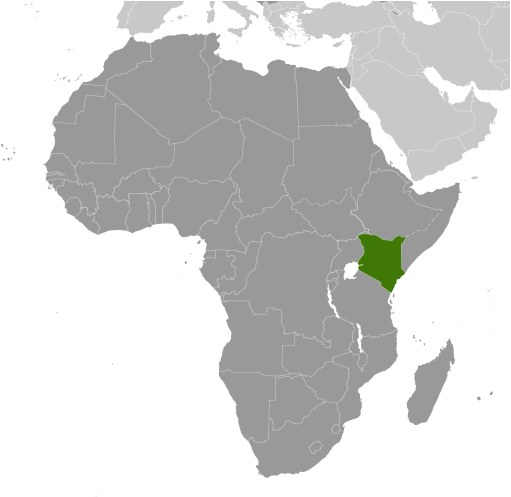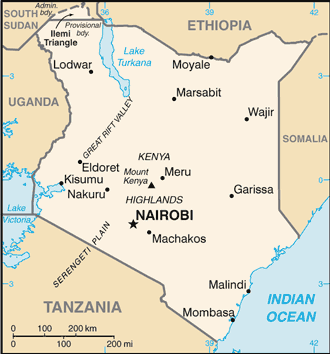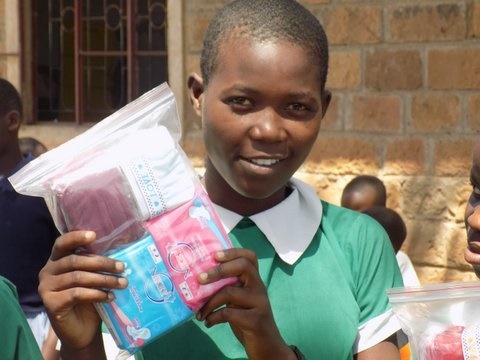
Mission
The mission of Kenya Self Help (KSHP) is to improve the social and economic future of Kendu Bay children through school-based programs that promote gender equity and advanced education opportunities.
Life Challenges of the Women Served
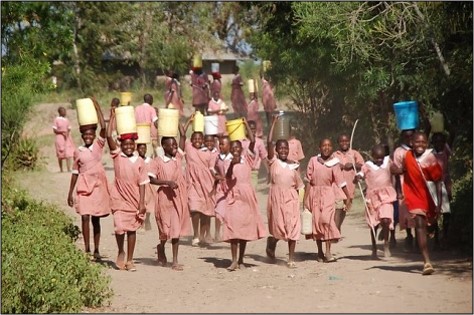 Traditional ideas about the roles of girls and women restrict their contributions to Kenya. These ideas hold women back from contributing to important development goals, especially in the areas of economic growth, nutrition and food security. A key issue limiting women’s potential is the lack of education. While the issue of gender equality has gained greater attention and the passing of the country’s new Constitution in 2010 increased women’s rights in Kenya, 40 percent of the region’s primary-aged girls do not finish grade 8. Local communities of subsistence farmers see little advantage in educating their girls. Families living on less than $2 per day cannot afford sanitary supplies to help daughters stay in school during menstruation, so adolescent girls miss nearly a week of school each month due to their menses. Other barriers to girls’ education in Kenya include emergencies caused by drought, child labor due to high levels of poverty, and religious and cultural traditions favoring boys. More than 30 percent of girls in Kenya get married before the age of 18.
Traditional ideas about the roles of girls and women restrict their contributions to Kenya. These ideas hold women back from contributing to important development goals, especially in the areas of economic growth, nutrition and food security. A key issue limiting women’s potential is the lack of education. While the issue of gender equality has gained greater attention and the passing of the country’s new Constitution in 2010 increased women’s rights in Kenya, 40 percent of the region’s primary-aged girls do not finish grade 8. Local communities of subsistence farmers see little advantage in educating their girls. Families living on less than $2 per day cannot afford sanitary supplies to help daughters stay in school during menstruation, so adolescent girls miss nearly a week of school each month due to their menses. Other barriers to girls’ education in Kenya include emergencies caused by drought, child labor due to high levels of poverty, and religious and cultural traditions favoring boys. More than 30 percent of girls in Kenya get married before the age of 18.
In Kendu Bay, where this project is located, the absence of girls’ health and AIDS-prevention education contributes to 25 percent HIV/AIDS prevalence among Kendu Bay girls, compared to the national average of 6 percent. Teenage pregnancy and motherhood among women ages 15-19 is the second highest in Kenya. Thirty-three percent of young women ages 15-19 have begun childbearing, compared to the nationwide average of 18 percent.
The life options of girls in this impoverished region are severely constrained by inadequate life-skills learning opportunities and lack of material support. There exists no in-school health education program, nor opportunity for girls to learn and apply life skills that can effectively improve their social and economic future.
The Project
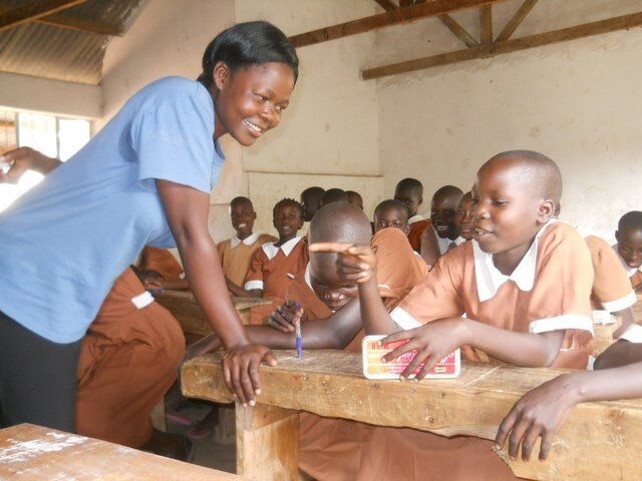 This project will provide an integrated, in-school program of Girls Club education, life skills training, and material support to improve health awareness, school retention, and class performance for 3,400 girls. This in-school gender equity and skills building program can improve the lives and futures of thousands of girls. In schools where the program has been implemented, it has reduced girls’ school dropout 98 percent, eliminated pregnancy, improved girls’ attendance and class performance, and raised high school eligibility to 100 percent.
This project will provide an integrated, in-school program of Girls Club education, life skills training, and material support to improve health awareness, school retention, and class performance for 3,400 girls. This in-school gender equity and skills building program can improve the lives and futures of thousands of girls. In schools where the program has been implemented, it has reduced girls’ school dropout 98 percent, eliminated pregnancy, improved girls’ attendance and class performance, and raised high school eligibility to 100 percent.
The major components of this project include the following:
- Girls Club education and skills-building program for girls in grades 4 – 8: Girls Club promotes girls’ social empowerment by providing a platform for girls to discover their potential, the tools for building their skills and a means for expressing them. Activities improve girls’ health awareness, self-confidence and decision-making through an integrated learning and skills-building program.
- Trained teacher mentors conduct weekly meetings on topics relevant to girls’ health, HIV/AIDS-prevention education and life skills development.
- A 19-page KSHP-produced girl child club manual gives club patrons (teachers) resources for guided discussion to help girls improve critical thinking and boost self-esteem.
- Girls apply their learning through inter-school exchanges and debates. These competitions with neighboring schools help girls develop their language and leadership skills. Girls Club debates earn prestige for the school and recognition for the girls who participate.
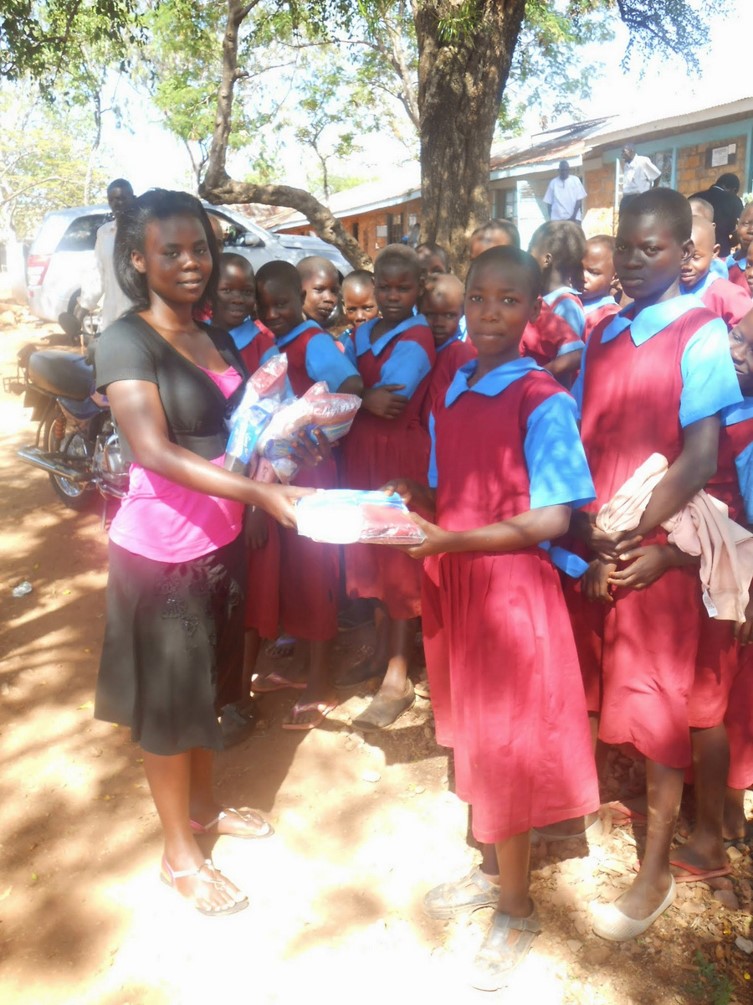 Program-supervised community service projects nurture girls’ sense of personal responsibility and commitment to communities where they live. Girls learn how to develop, plan, carry out and evaluate projects that improve quality of life in their communities. End-of-year school and community education events recognize the collective effect of Girls Club community service projects and their contribution to community wellbeing.
Program-supervised community service projects nurture girls’ sense of personal responsibility and commitment to communities where they live. Girls learn how to develop, plan, carry out and evaluate projects that improve quality of life in their communities. End-of-year school and community education events recognize the collective effect of Girls Club community service projects and their contribution to community wellbeing.- Dignity Kit distribution: Over 2,050 adolescent girls in 23 partner schools receive Dignity Kits twice each year to reduce absenteeism caused by girls’ monthly menses. Kits contain underwear, locally-made reusable sanitary supplies and emergency disposable pads. Dignity Kit distributions serve as school and community education events to raise awareness and improve understanding around girl child issues. An additional benefit is that KSHP commissions a local women’s cooperative to produce reusable sanitary pads.
The gender equity and social empowerment program aims to reduce girls’ primary school dropout rate in grades 4-8 to less than 0.002%, hold pregnancies to near zero in 23 schools, reduce absenteeism caused by lack of personal supplies, improve girls’ high school eligibility to near 100 percent and improve girls’ leadership in class rank, school congress and class president positions.
Sustainable Development Goals
![]()
![]()
![]()
![]()
Questions for Discussion
- How do you think education can help eradicate poverty?
- How do you think this project can help promote self-sufficiency for women?
- To what extent do cultural barriers affect women’s education?
How the Grant Will be Used
DFW’s grant of $44,990 over two years will pay for the Girls Empowerment Program in 23 schools. Much of the budget will finance Dignity Kits. In addition, activity supplies, inter-club meetings, exchanges and debates, teacher and leader training and materials will be funded.
| Year 1- Direct: Impact 3,400 | Indirect Impact: 6,800 |
| Year 2- Direct Impact: 3,500 | Indirect Impact: 7,000 |
Why We Love This Project/Organization
We love the focus on young girls, the focus on breaking menstrual taboos, and providing opportunities for girls to debate. The monitoring and evaluation of this project is good, with a proven record of success and an emphasis on community service.
Evidence of Success
From 2011-2015, this program has:
- Reduced girls’ school dropout rate by 98 percent from an annual average dropout of 230 girls to four girls in 2015
- Eliminated pregnancy of participating girls from 29 girls to zero
- Reduced absenteeism up to 70 percent in 23 schools
- Boosted girls’ high school eligibility from 43 percent to 100 percent
- Improved girls’ class performance and school leadership to the point that the majority of top performing students are girls – for the first time ever.
Voices of the Girls
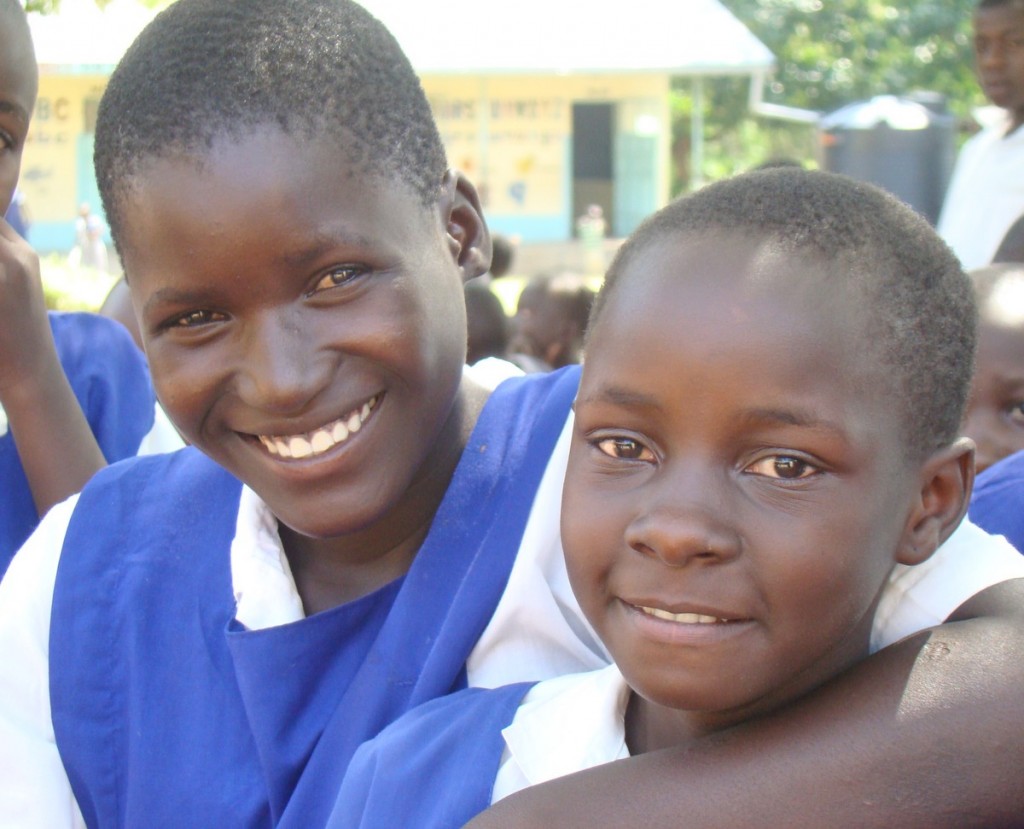 When I was in Standard 6, only one girl was in the top ten of our class. Then KSHP trained us and made us confident. This year in Standard 8, girls lead the boys. Out of the top ten students, eight are girls! Four girls are in the top five at my school today.
When I was in Standard 6, only one girl was in the top ten of our class. Then KSHP trained us and made us confident. This year in Standard 8, girls lead the boys. Out of the top ten students, eight are girls! Four girls are in the top five at my school today.
Rose Auma, Girls Club leader, Alego Primary
We as girls appreciate your development, seminars and teachings you impart on us about life and the rights of the girl child. You have done a lot to protect us from dangers of rape, early marriages, school dropouts and misuse by boys and arrogant men. Our education is now made easier than before. Please do not stop your initiatives in Kendu Bay until the last girl will be born. To the mothers who are here, give birth to more girls. They are the future to our country. To the fathers who want to put (on) coat suits like that of the Prime Minister Raila, educate your girls now.
Daisy Owuor, age 13, Kogembo Primary, speech given at community event
Our Girl Child Club invites visitors and guests to come talk with us. These ladies tell us how they worked hard in school to reach their goal. Even from the way they dress, you look at them and say, ‘I want one day to dress like that girl.’ So it motivates me. We use these ladies as our role models.
Emmaculate Adhiambo, Warao Primary
Not a single girl wants to miss this (Girls Club) meeting! In fact, one week KSHP was late to arrive, so our teachers sent us home. But we hid in the bushes to wait. When we saw the vehicle, we rushed out to meet Date so we could have our meeting. I can tell you, our behavior has changed. We counsel our sisters to stay in school and to never give up.
Michelle Awuor, student, Otok Primary
Since Girl Child Clubs started, girls have learned to become more outspoken. We now have the courage to speak in front of others and lead them. This has enabled us to be chosen as leaders in our schools.
Noel Judith Ongwena, Oriang’ Manyuwanda Primary
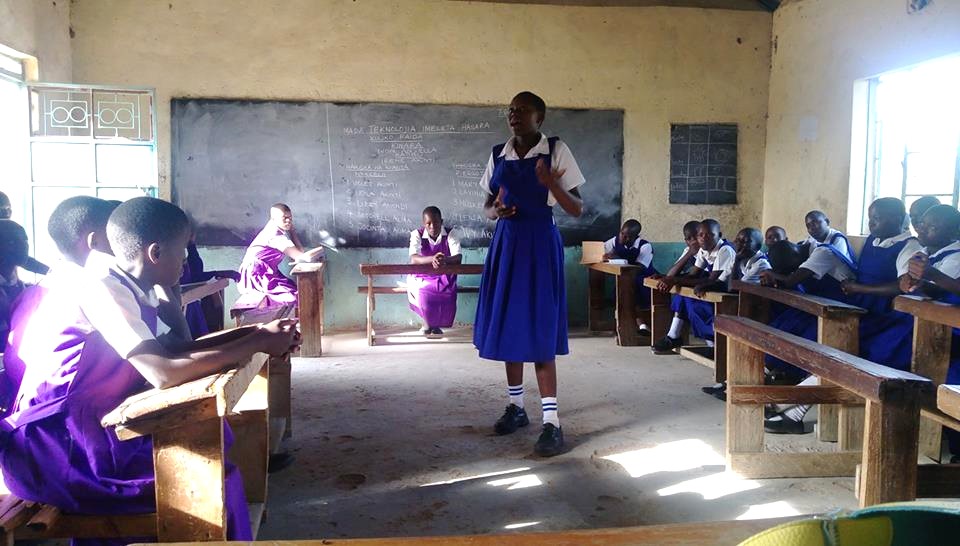 What you people at KSHP are doing for our girls is the best thing that has ever happened in our schools. These girls grow up being told, ‘You can never amount to anything,’ But you came in with Girl Child Club education and helped them learn to VALUE THEMSELVES. Girls’ self-confidence has grown so much! These activities make them realize they have potential.
What you people at KSHP are doing for our girls is the best thing that has ever happened in our schools. These girls grow up being told, ‘You can never amount to anything,’ But you came in with Girl Child Club education and helped them learn to VALUE THEMSELVES. Girls’ self-confidence has grown so much! These activities make them realize they have potential.
Moses Migele, Head teacher, Ongalo Primary
(Regarding Dignity Kits) We are so happy to have these pads! I feel very confident now and am not afraid to go out from my house and go to school. Before, I used to hide at home during my period.
Esther Odhiambo, Kibugu Primary
About the Organization
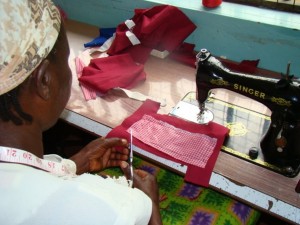 In 2005, a core of friends and community leaders in the United States joined hands to form a grassroots organization dedicated to improving education opportunity and the social empowerment of children in Kendu Bay, western Kenya.
In 2005, a core of friends and community leaders in the United States joined hands to form a grassroots organization dedicated to improving education opportunity and the social empowerment of children in Kendu Bay, western Kenya.
The first years of scholarship awards revealed an under-representation of eligible girls. Thus, in 2009, KSHP introduced a gender-equity program at six primary schools and launched its first in-school Girls Clubs. To keep girls in school during their menses, KSHP commissioned a local women’s cooperative to produce reusable sanitary pads. That year, 125 girls received the first distribution of Dignity Kits. As funding allowed, KSHP expanded its Girls Empowerment Program into new schools. By 2013, all grade 4-8 girls in Nyakongo zone’s 23 primary schools participated in KSHP Girls Club education activities. In 2016, more than 2,050 adolescent girls received Dignity Kits during biannual distributions.
Where They Work
Kenya Self Help Project is in the Nyakongo zone (Kendu Bay), Rachuonyo North Sub-County, Homa Bay County in western Kenya. Kenya is in Eastern Africa, bordering the Indian Ocean, between Somalia and Tanzania. It is about five times the size of the state of Ohio and slightly more than twice the size of Nevada.
Kenya has a population estimated at 46.1 million, which increases by an estimated one million a year. Kenya has experienced dramatic population growth since the mid-20th Century as a result of its high birth rate and its declining mortality rate. More than 40 percent of Kenyans are under the age of 15 because of sustained high fertility, early marriage and childbearing, and an unmet need for family planning. This rapid population growth strains the labor market, social services, arable land and natural resources.
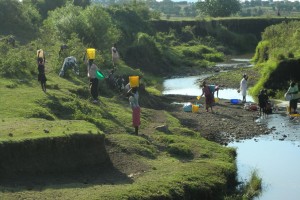 The median age of Kenyans is 19.5 years. The mother’s median age at first birth is 20.3 years. The maternal mortality rate is 510 deaths/100,000 live births, and the infant mortality rate is 38.3 deaths/1,000 live births. HIV/AIDS infects 5.91 percent of adults in Kenya. The literacy rate for males over 15 is 81.1 percent, and the rate for females is 74.9 percent (2015 est.).
The median age of Kenyans is 19.5 years. The mother’s median age at first birth is 20.3 years. The maternal mortality rate is 510 deaths/100,000 live births, and the infant mortality rate is 38.3 deaths/1,000 live births. HIV/AIDS infects 5.91 percent of adults in Kenya. The literacy rate for males over 15 is 81.1 percent, and the rate for females is 74.9 percent (2015 est.).
Kenya has made significant structural and economic reforms that have contributed to sustained economic growth in the past decade. Development challenges include poverty, inequality, climate change, and vulnerability of the economy to internal and external shocks.
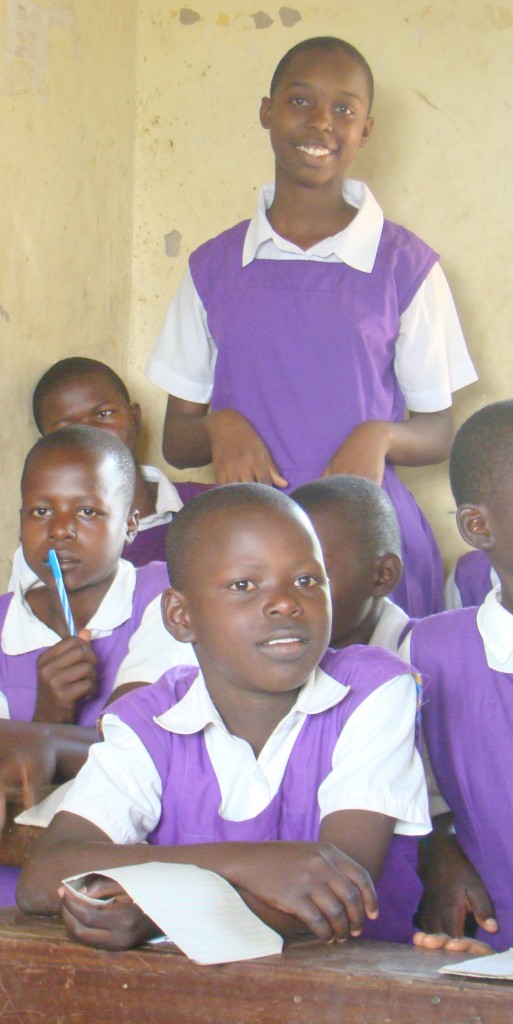 A Closer Look at Girls’ Educational Challenges
A Closer Look at Girls’ Educational Challenges
Despite progress in recent years, girls throughout the world continue to suffer severe disadvantage and exclusion in education systems. An estimated 31 million girls of primary school age and 32 million girls of lower secondary school age were out of school in 2013. Across Africa, 28 million girls between the ages of about 6 and 15 are not in school and many will never even set foot in a classroom.
There are a variety of barriers to girls’ education throughout the world. Some include school fees, strong cultural norms favoring boys’ education when a family has limited resources, inadequate sanitation facilities in schools such as lack of private and separate latrines, and negative classroom environments, where girls may face violence, exploitation or corporal punishment. Additionally, schools often lack sufficient numbers of female teachers.
Increasingly, adolescent girls also face economic and social demands that further disrupt their education, spanning from household obligations and child labor to child marriage, gender-based violence and female genital cutting/mutilation. Parents seek to secure a girl’s financial future through marriage, rather than education. An adolescent girl may be forced to abandon school to help with chores, to prepare for marriage, or out of fear of harassment.
Educated women tend to be healthier, earn more income, have fewer children, and provide better health care and education to their own children, all of which can lift households out of poverty. They are less likely to marry early and against their will, and less likely to die in childbirth. When all children have access to a quality education rooted in human rights and gender equality, it creates a ripple effect of opportunity that influences generations to come.
In April 2016, Dining for Women awarded its first partnership grant of $100,000 to the Peace Corps’ Let Girls Learn Fund. Let Girls Learn seeks to eliminate the barriers that 62 million girls worldwide face in accessing an education. For more information, visit the Dining for Women website.
Source Materials


